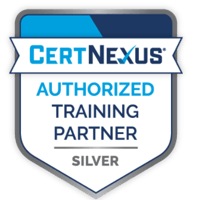All businesses face risk. Small businesses are no different. The more a small business grows and expands, the greater the risks the business will face. The fact is that almost all risks will increase with growth and expansion. The more success your small business achieves, the more your risks—both weaknesses and threats—will increase.
What are the types of risks that you face as a small business owner? It will depend on the nature of your enterprise. Some risks are universal. Reputational harm can come from customers and competitors alike, for example—no matter the nature of the business. Natural disasters can impact all businesses, no matter the nature of your business.
Business risks will almost always have financial consequences if mismanaged.
There are Two Basic Types of Risks
According to the SBA, there are really two types of risks: internal risk (weaknesses) and external risks (threats). See, this report “Participant Guide to Risk Management” that was recently published by the Small Business Association.
As your small business expands, so does your exposure to both internal risks and external risks. The SBA describes expansion as an “opportunity” that brings increased risks. Small business owners, like larger companies, face increased risks both internally and externally as their levels of success and growth expand.
How does a small business owner control risk as they expand?
Coursera.com identifies five ways for managing and mitigating risk. According to coursera.com, “the risk management process includes five steps: identify, analyze, evaluate, treat, and monitor. You can mitigate risks by avoiding, accepting, reducing, or transferring them.”
| The Risk Management Process | The Risk Mitigation Process |
| IDENTIFY THE RISK | AVOID |
| ANALYZE THE RISK | ACCEPT |
| EVALUATE THE RISK | REDUCE |
| TREAT THE RISK | TRANSFER |
| MONITOR THE RISK |
Let us begin with the Risk Management Process and then move to the Risk Mitigation Process:
Risk Management
- Identify
The SBA notes that “generally, you can control internal risks once you identify them.” How does a small business owner identify risks? There are many ways and these often depend on the type of risk.
Any employees, for example, can sue for the company for workplace injuries stemming from faulty equipment, or for discrimination, for unpaid wages, or other reasons. Your employees arguably pose the greatest risks to your business from the inside. But these risks are easier to control once you identify them, than would be external risks coming from competitors and others. So, where there is faulty equipment, fix them before they become a liability. Where there are issues in your employee sensitivity training, provide training so that discrimination lawsuits are reduced, and so forth.
- Analyze
Before a small business owner can decide what to do about risk management, he or she will have to analyze the data relating to the risk to determine exactly the level of exposure and threat it poses to their bottom line. Business owners must interpret figures, numbers, and other metrics.
- Evaluate
Once the team has analyzed the data, they now have to evaluate their options. Business owners have to test theories, hypotheses and ideas to gauge what might be the best strategy based on the data they collect. This could require a team to brainstorm about the type of risks. What exactly is the weakness or threat? Is it internal or external? Can it be controlled? What is the level of exposure this risk poses to the company’s bottom line if one management or mitigation strategy is used, versus another?
At what cost could one strategy be used, vis a vis another strategy, based on the raw data, and analysis? As a business owner, when you evaluate the risks to your business you have to decide which is the best option for treatment of the risk to prevent it from decimating the company’s capital and revenues.
- Treat
How does a company treat risk after identifying the risk, analyzing the risk and evaluating their options for risk management? Simply put, they do what is within their control, based on an assessment of the data, to manage the risk and keep it from torpedoing their bottom line. The treatment will obviously consider the type of risk which can vary from “financial uncertainties, legal liabilities, technology issues, strategic management errors, accidents and natural disasters.” Techtarget.com
- Monitor
Finally, the business owner must monitor the situation regularly to make sure that the risk management strategies they are using, are yielding the results expected. It is well known that risks can change over time, and sometimes over a relatively short period of time. In more fluid situations, changing risks require constant real time monitoring to avoid unnecessary exposure.
Risk Mitigation Strategies
- Avoid
Some risks are better avoided in the first place. In other words, “the best defense is a good offense” or a “stitch in time saves nine.” So, the first rule of risk management is to avoid the risk in the first place if you can. A business owner cannot control all risks, but it is best to identify and AVOID bad risks.
- Accept
Risk management experts have almost unanimously agreed that most external risks may be out of the business owner’s control. This means small business owners will have to accept some risks. There is nothing that a business owner can do about some types of risks—whether they are internal or external. For example, employees die from time to time. This is always a risk, one that must be accepted. It is a question of managing controllable risks effectively by doing the due diligence that is necessary: identification, analysis, evaluation, treatment and monitoring when you can, and leaving those risks that are uncontrollable to be addressed on a case-by-case basis.
- Reduce
Another way to mitigate risk is to reduce it. For example, faulty equipment in the workplace is a risk. Reduce this risk by doing regular management and control of the equipment. Employee theft is a risk. Reduce the risk by using AI tools and automation where possible. Health concerns is a risk. Reduce the risk by facilitating better health and work/life balance in your employees.
- Transfer
How does a small business owner transfer risk? Quite simply by having insurance. When you buy an insurance policy for any reason, you are basically transferring your financial risk for that thing you are insuring. So, a small business can mitigate its risks by being insured up to the hilt for everything it possibly can be insured for.













